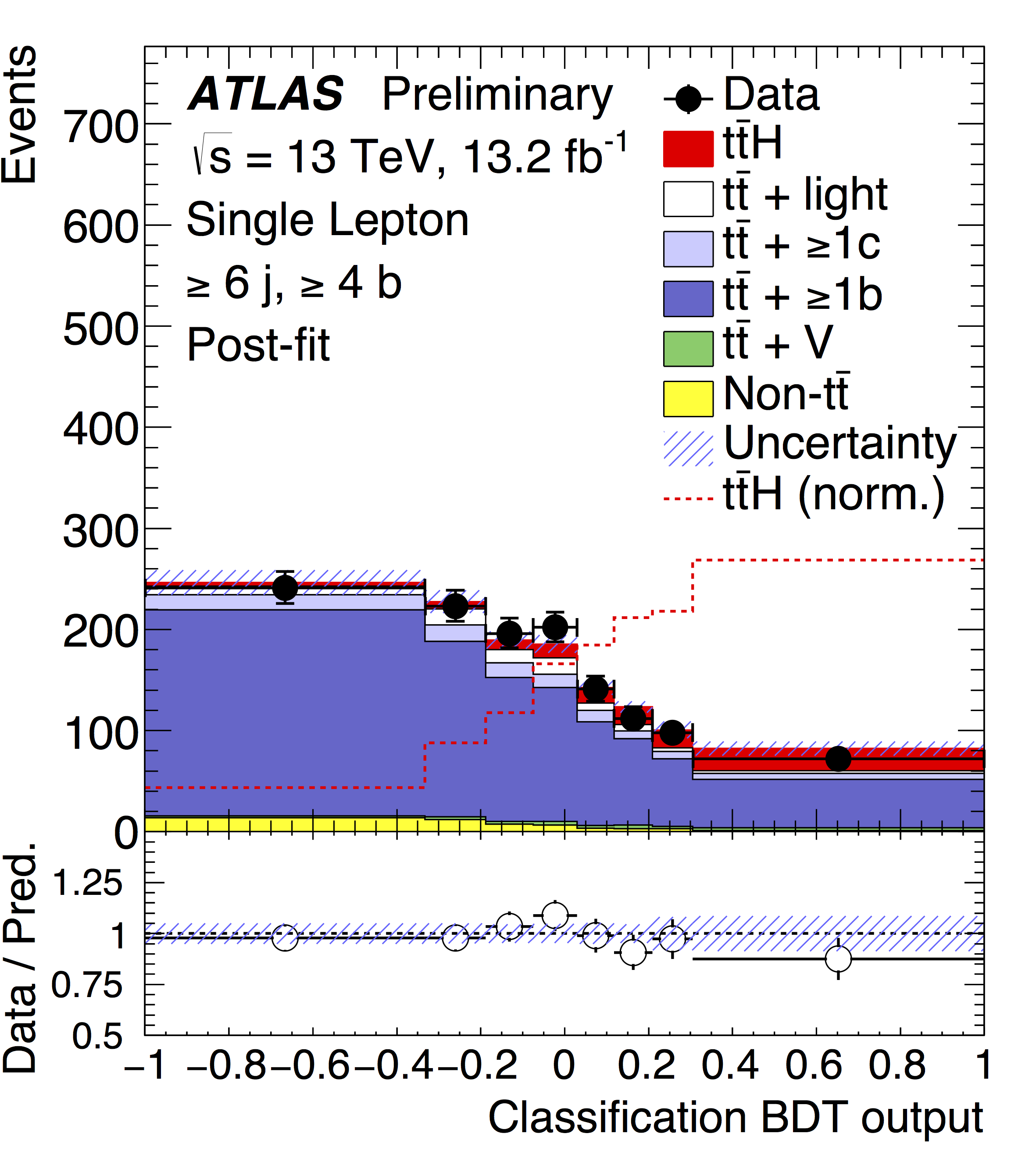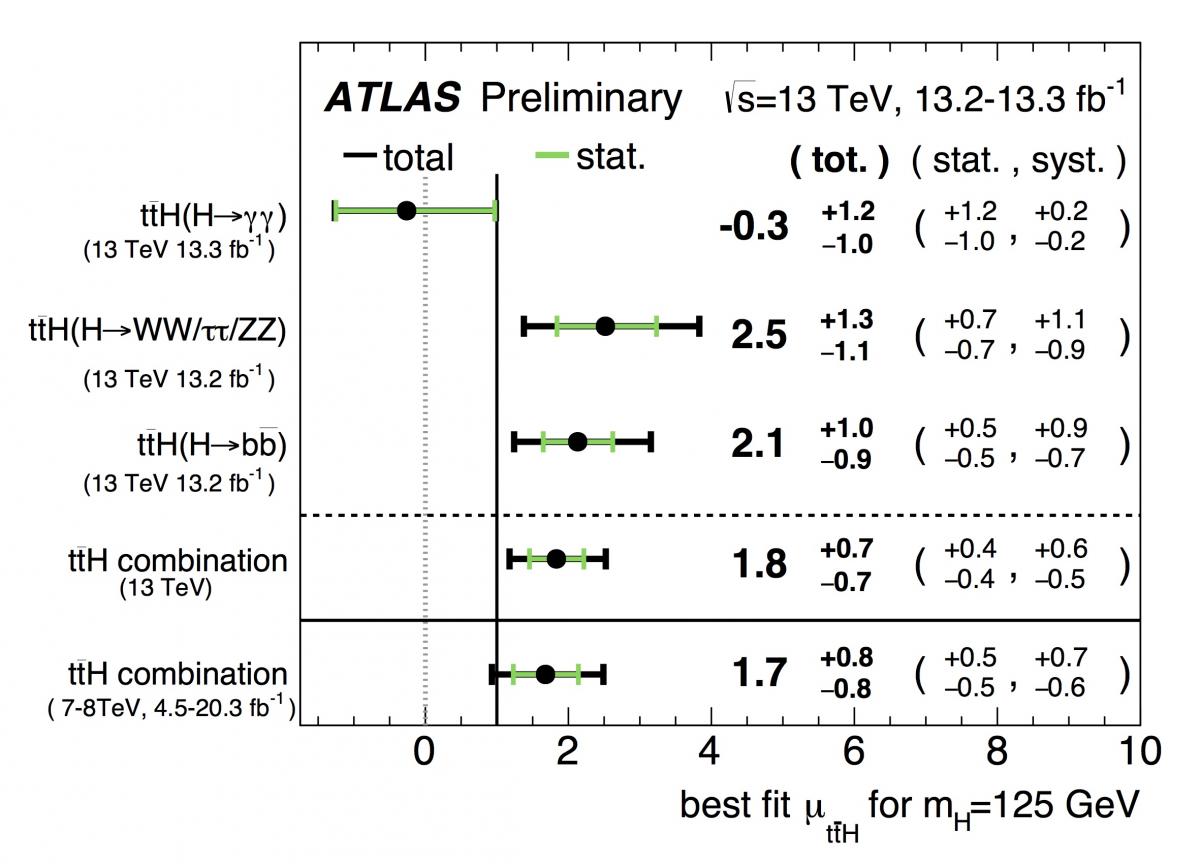Hunting the origin of the top quark’s mass
4 August 2016 | By

The top quark is the heaviest fundamental particle yet discovered. Like other matter particles, its mass is believed to arise from its interactions with the Higgs field. There are strong indirect indications that this is the case, but physicists would very much like to confirm this directly by observing a top quark emitting or absorbing a Higgs boson. This would not only serve as a direct check of the mechanism by which matter particles get mass, but would also provide a new measurement that can be cross-checked with others to see if they give a coherent picture of the Higgs boson’s interactions or if they indicate that something unexpected is going on that differs from the Standard Model of particle physics.
The ATLAS experiment has been searching for the process in which a pair of top quarks is produced, where one is a “virtual” particle that emits a Higgs boson on the way to becoming a “real” particle. This process is referred to as ttH production after the particles that are produced. It is fairly rare, occurring only around once every three minutes when the Large Hadron Collider is operating at design luminosity. Not all of these events are found, and there are many other processes (“background”) that can mimic the signal that is expected to be seen in the detector.
To collect as many events as possible, ATLAS analysed events with a variety of Higgs boson decays. The first search was designed to find events with a Higgs boson decay to a bottom quark pair; the second looked for the Higgs boson decays to a pair of W bosons or tau leptons; and the third for the Higgs boson decays to a pair of photons.
At this point, it is not possible to say conclusively from any single analysis whether or not ttH production occurs. However, by combining the different Higgs decays together, a more compelling argument can be made for the process occurring. Using 13 TeV LHC data collected in 2015 and part of 2016, ATLAS has combined the results of the three analyses. The results show that, if there is no ttH production, the probability that the observed results would occur purely by chance is 3 in 1000 (corresponding to 2.8 sigma).

Links:
- Searches for ttH production with Higgs decays to bb (ATLAS-CONF-2016-080): https://atlas.web.cern.ch/Atlas/GROUPS/PHYSICS/CONFNOTES/ATLAS-CONF-2016-080/
- Searches for ttH production with multi-lepton events (ATLAS-CONF-2016-058): https://atlas.web.cern.ch/Atlas/GROUPS/PHYSICS/CONFNOTES/ATLAS-CONF-2016-058/
- Combination of searches for ttH production (ATLAS-CONF-2016-068): https://atlas.web.cern.ch/Atlas/GROUPS/PHYSICS/CONFNOTES/ATLAS-CONF-2016-068/
- Measurements of Higgs couplings in the diphoton channel (ATLAS-CONF-2016-067): https://atlas.web.cern.ch/Atlas/GROUPS/PHYSICS/CONFNOTES/ATLAS-CONF-2016-067/
- Find all ATLAS 13 TeV results for 2016 summer conferences: https://twiki.cern.ch/twiki/bin/view/AtlasPublic/Summer2016-13TeV



